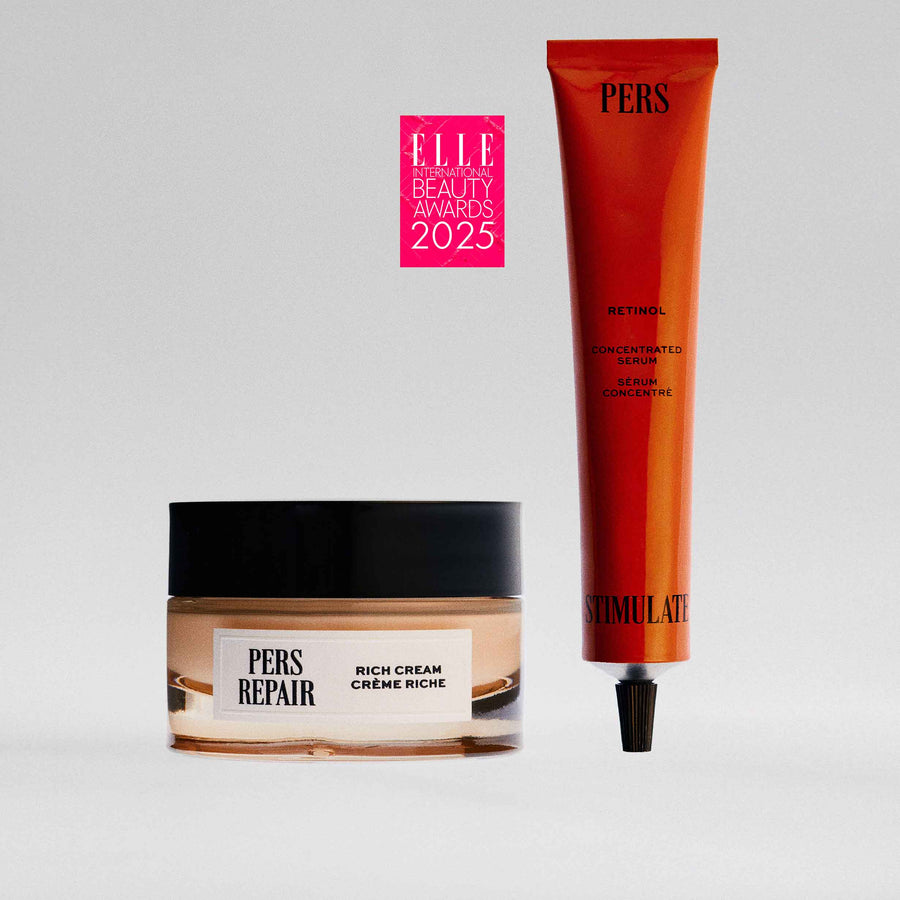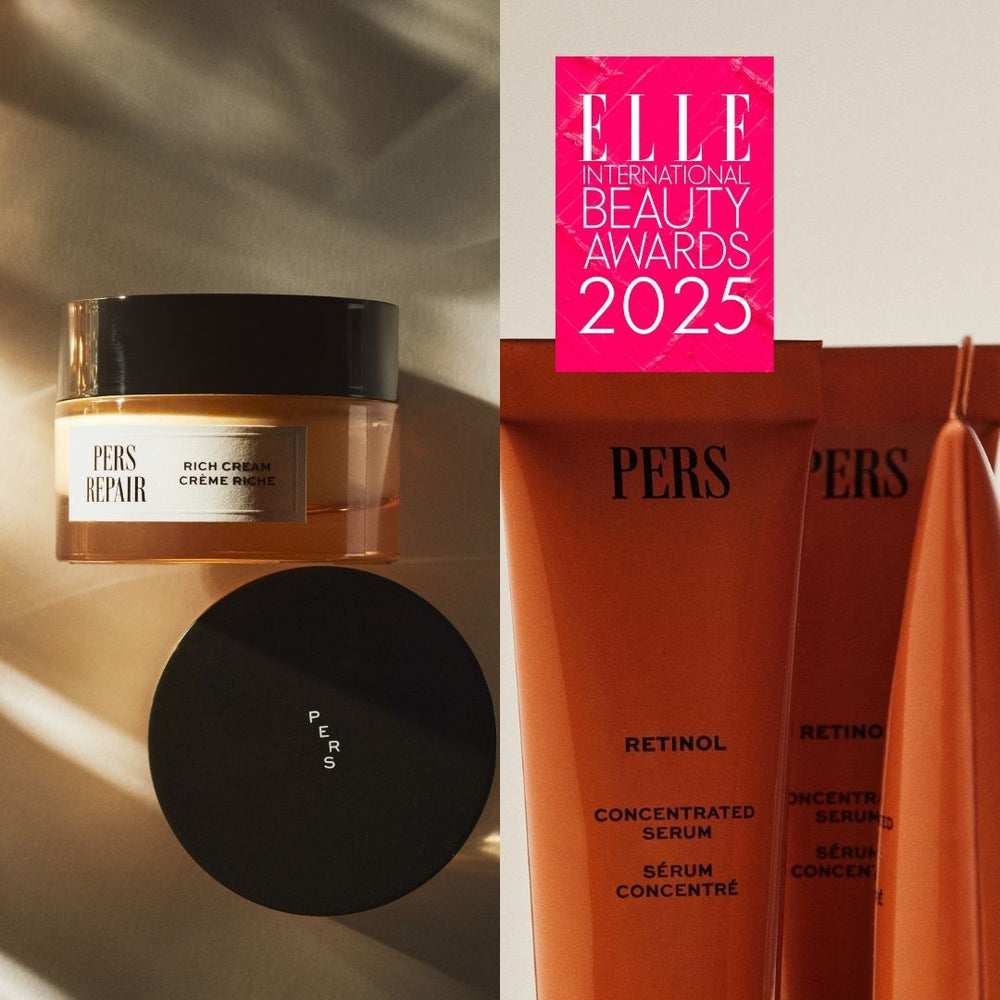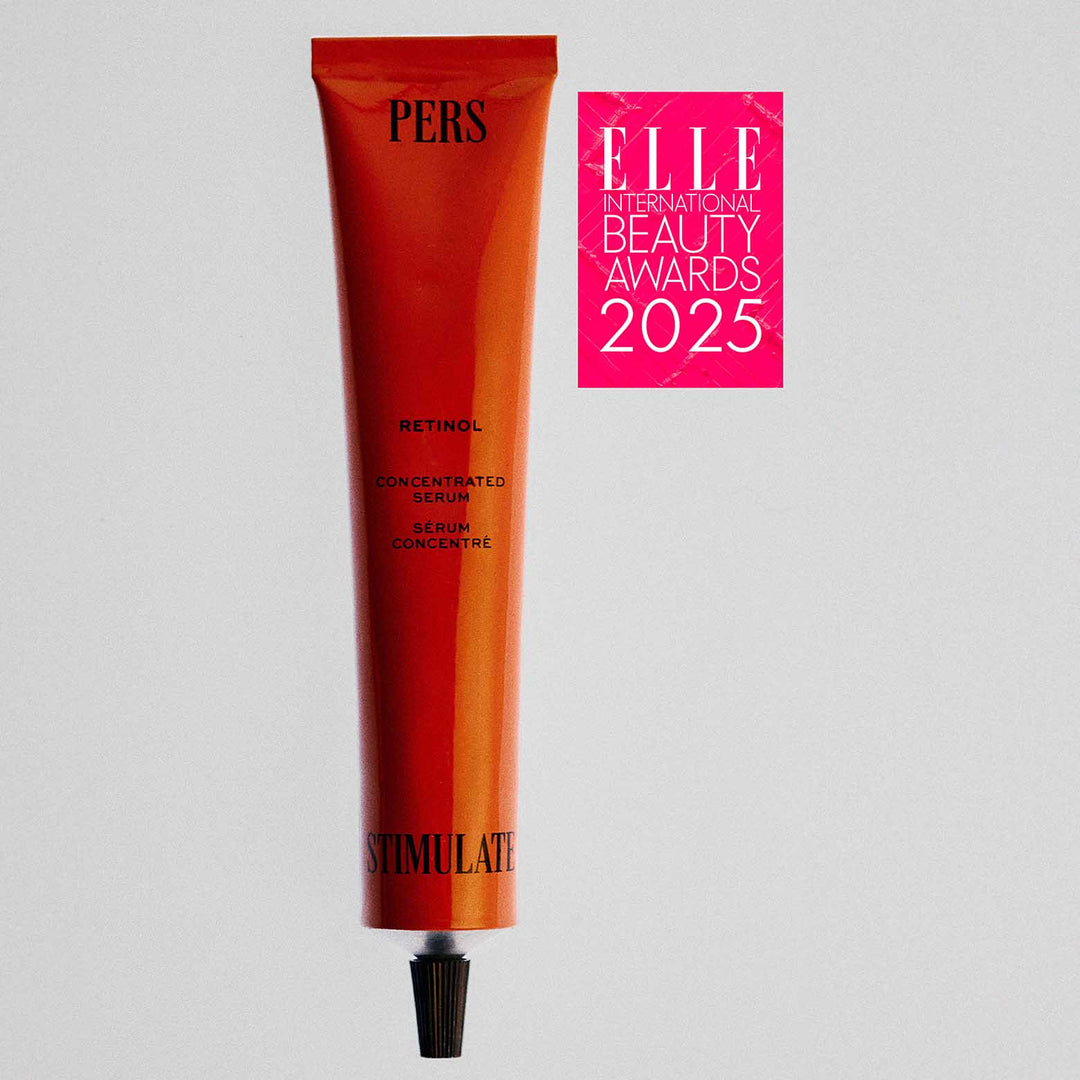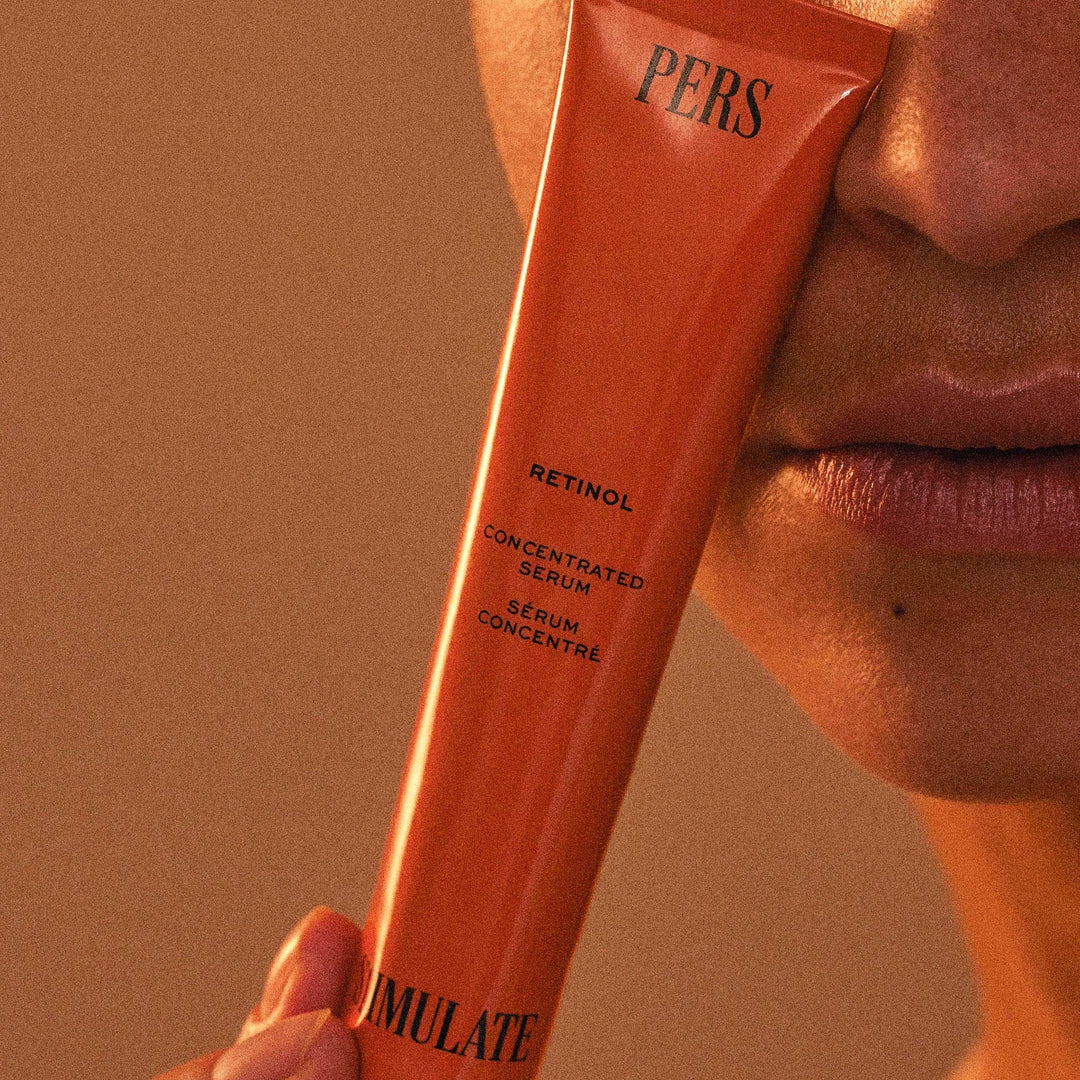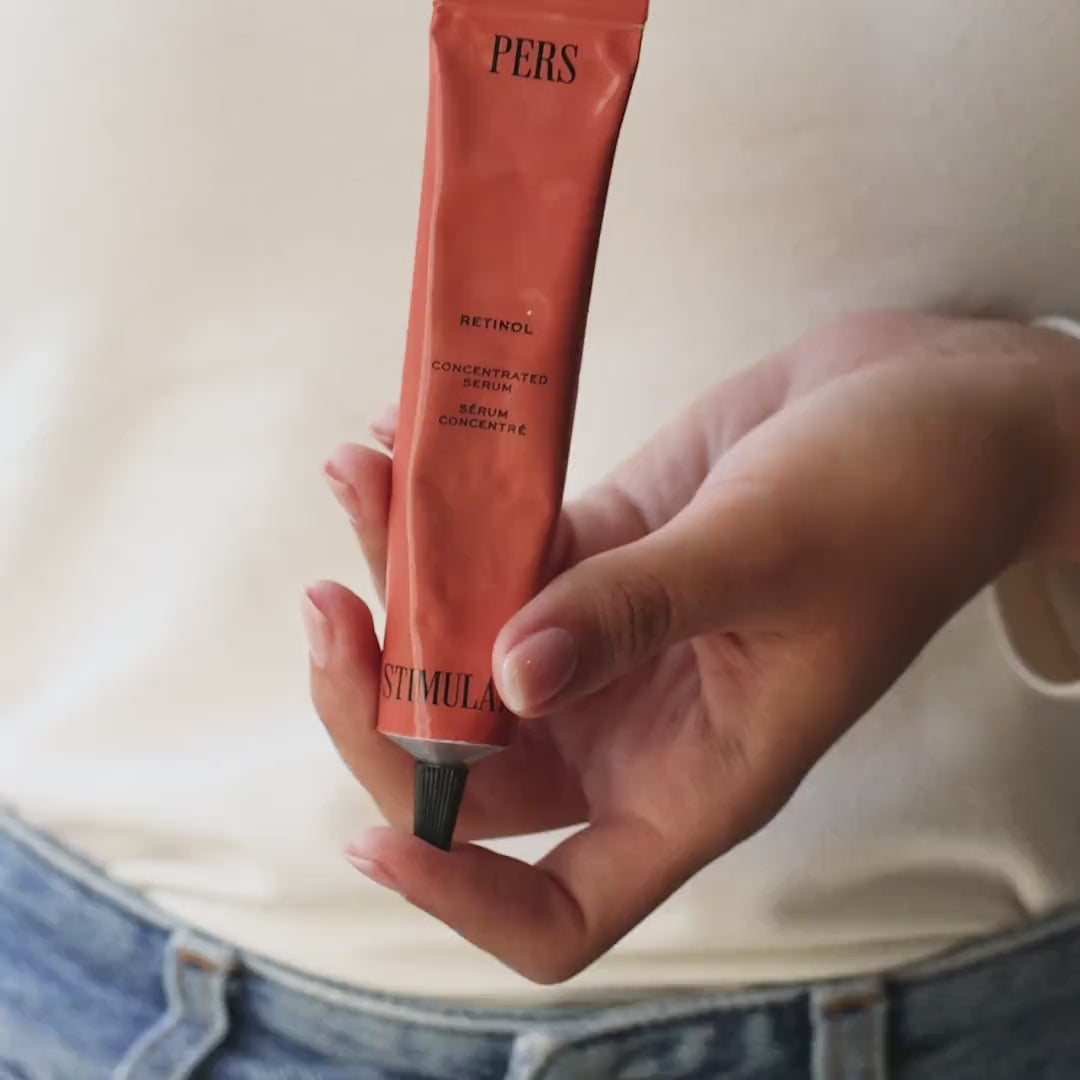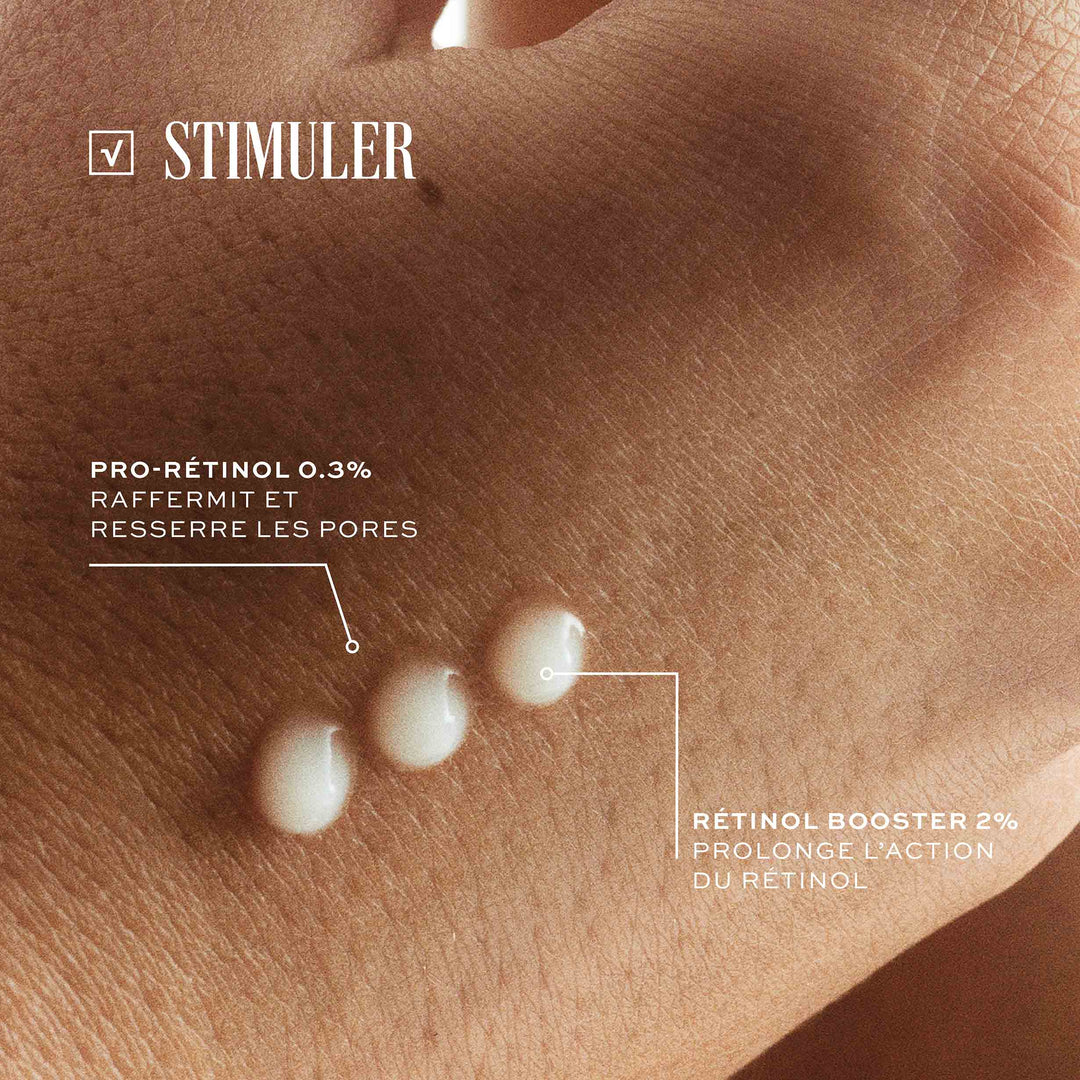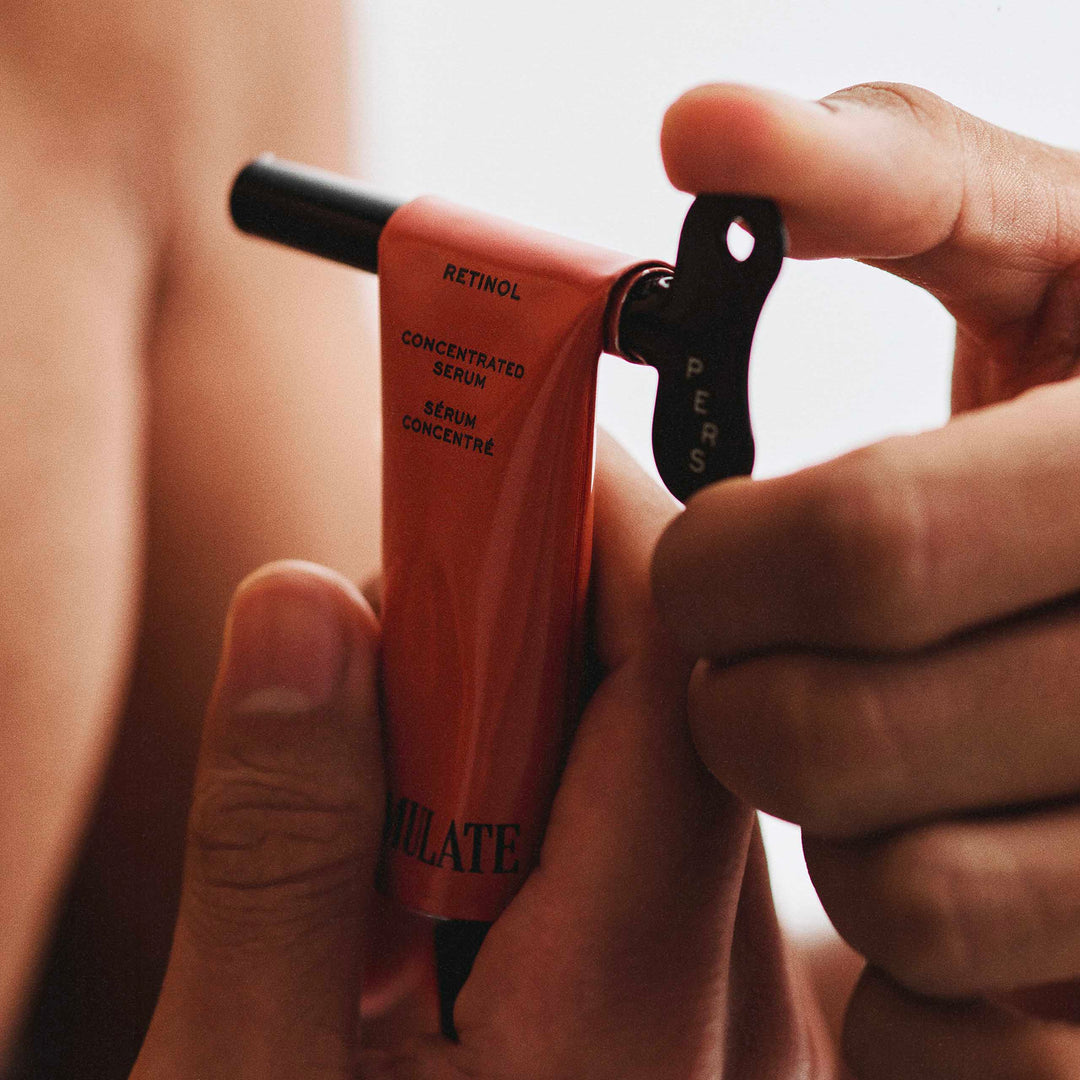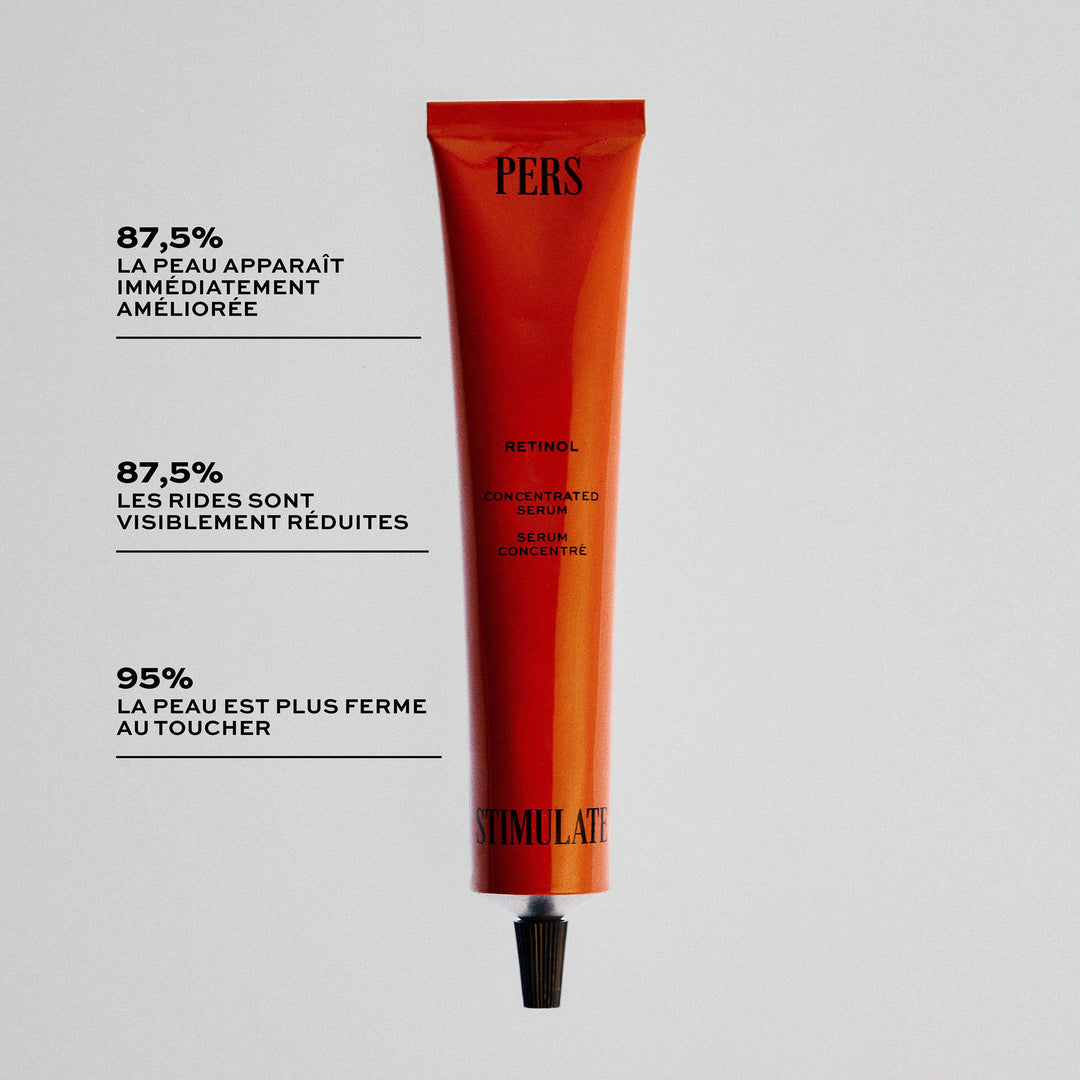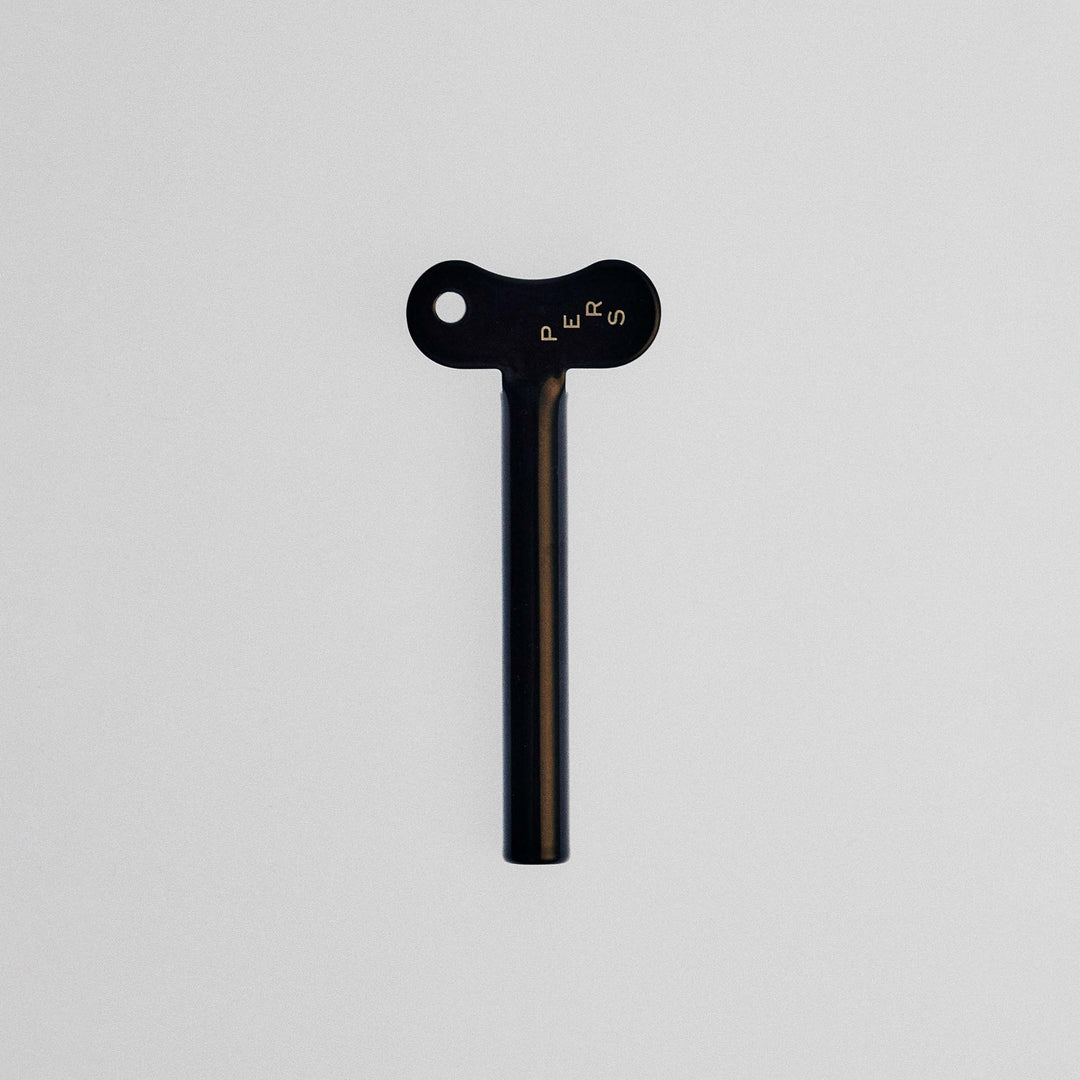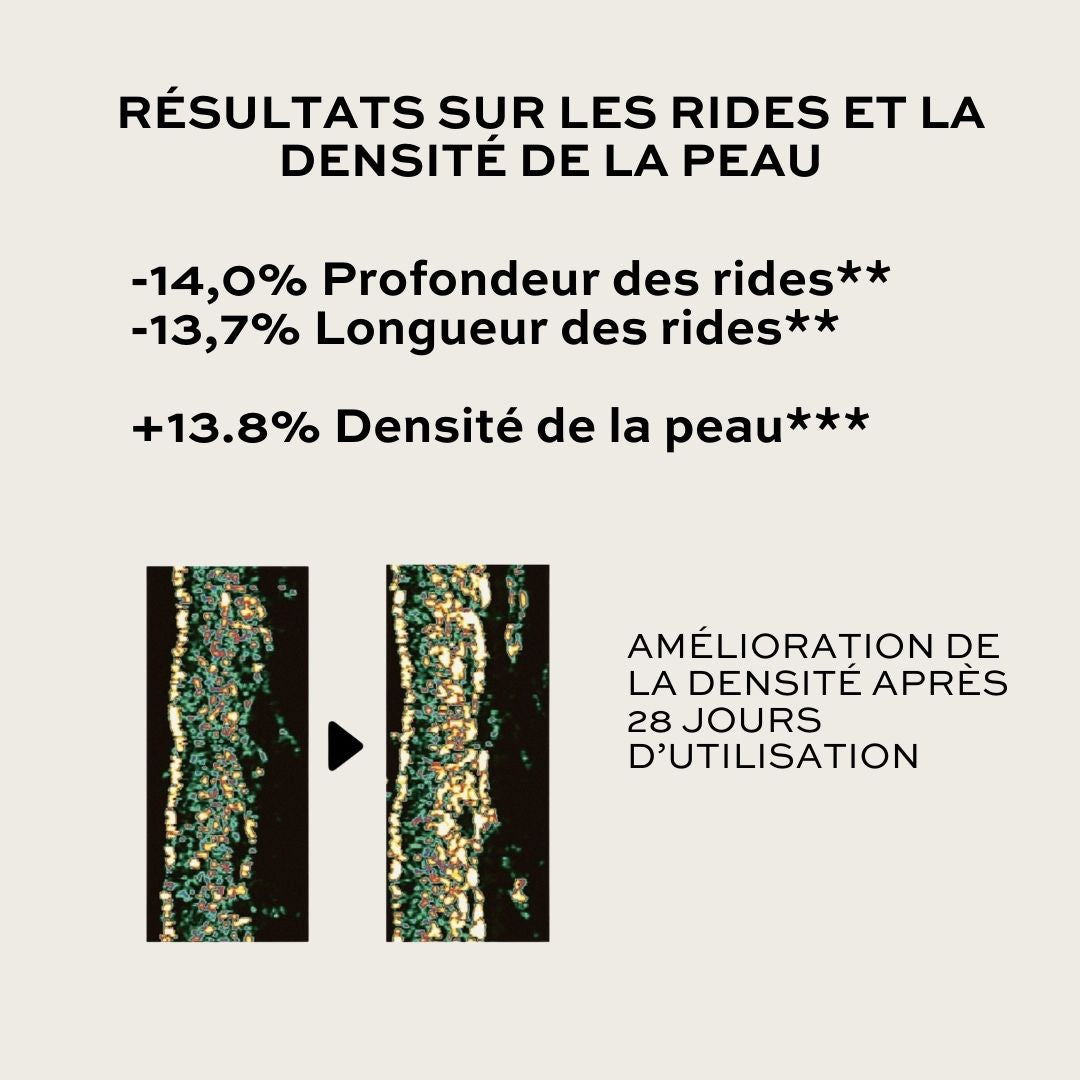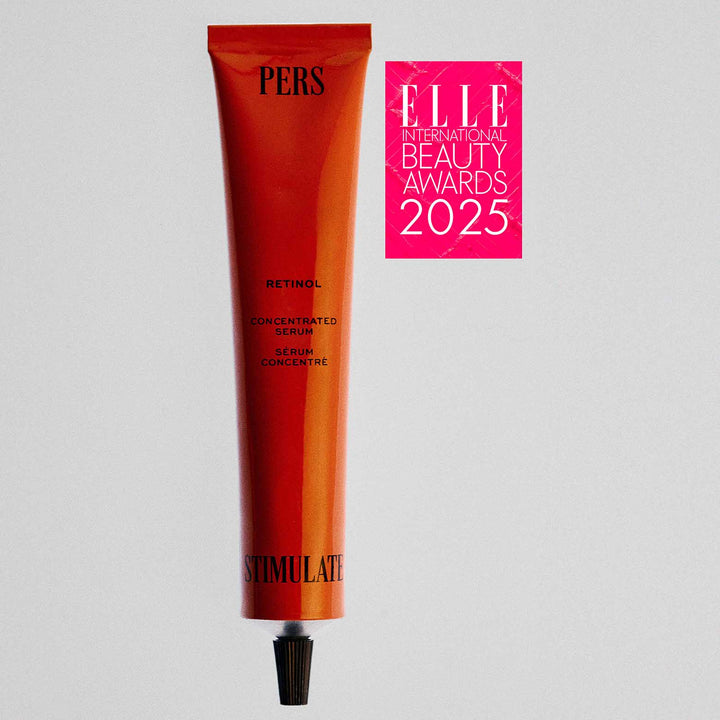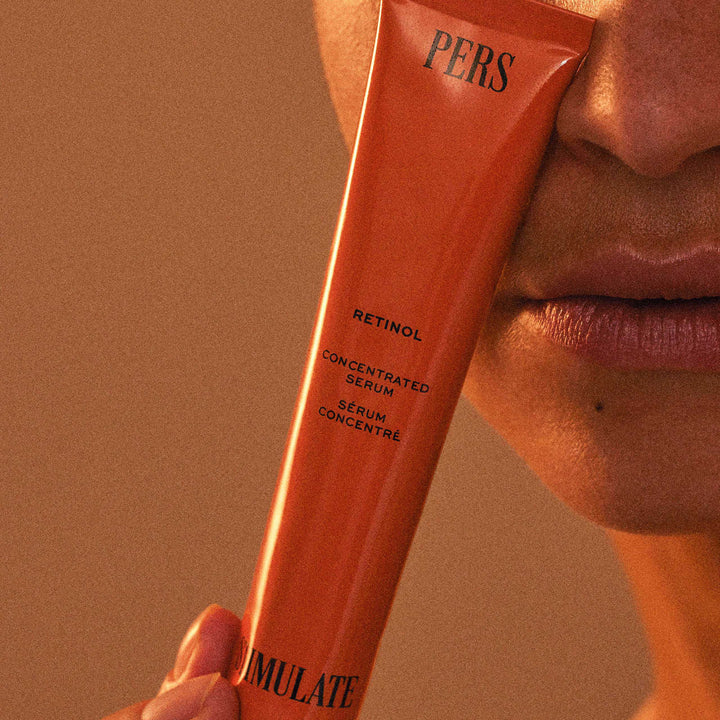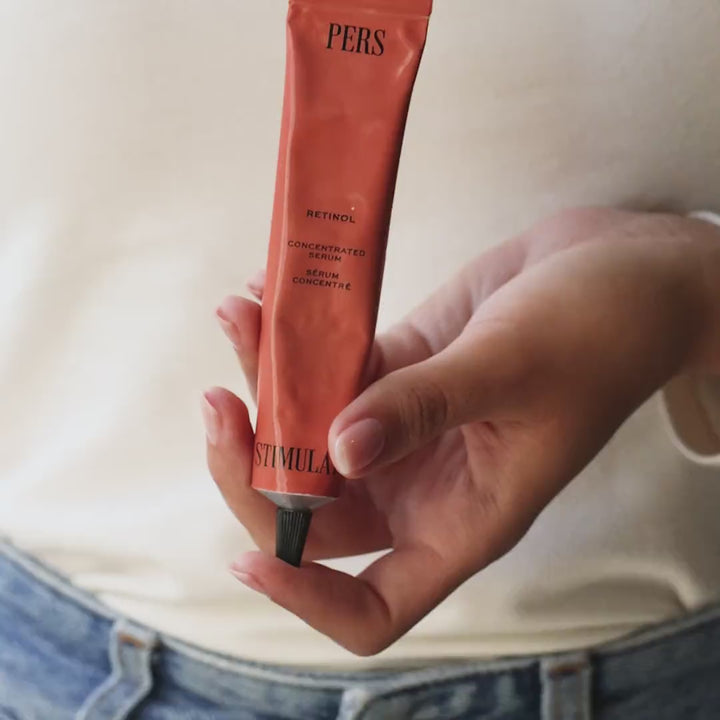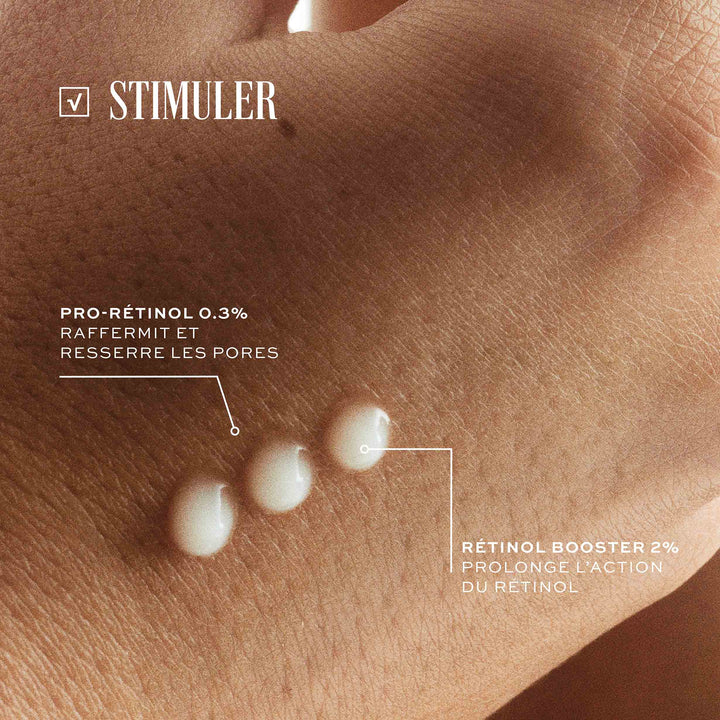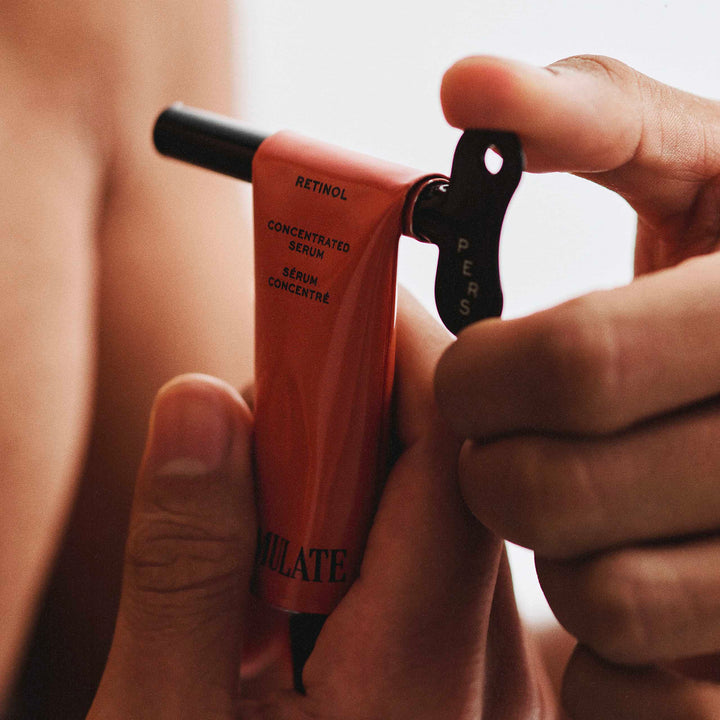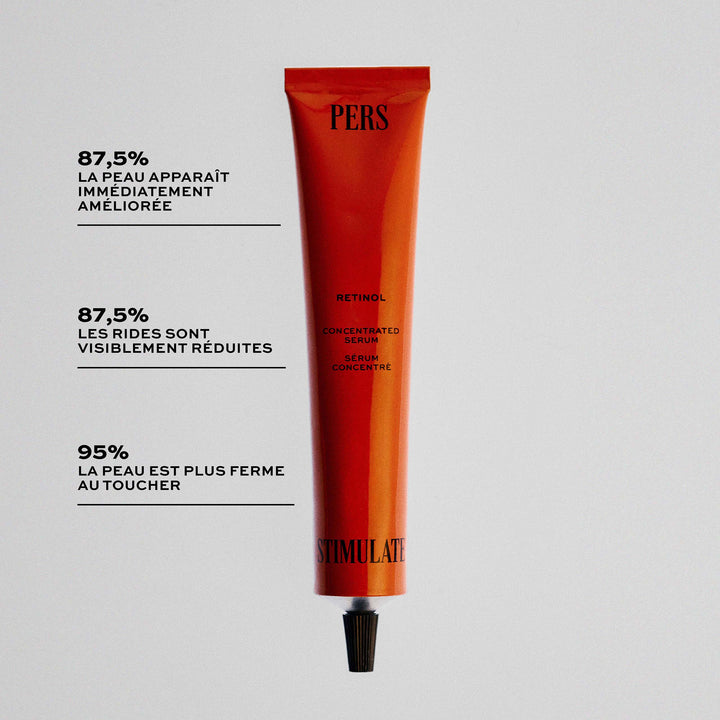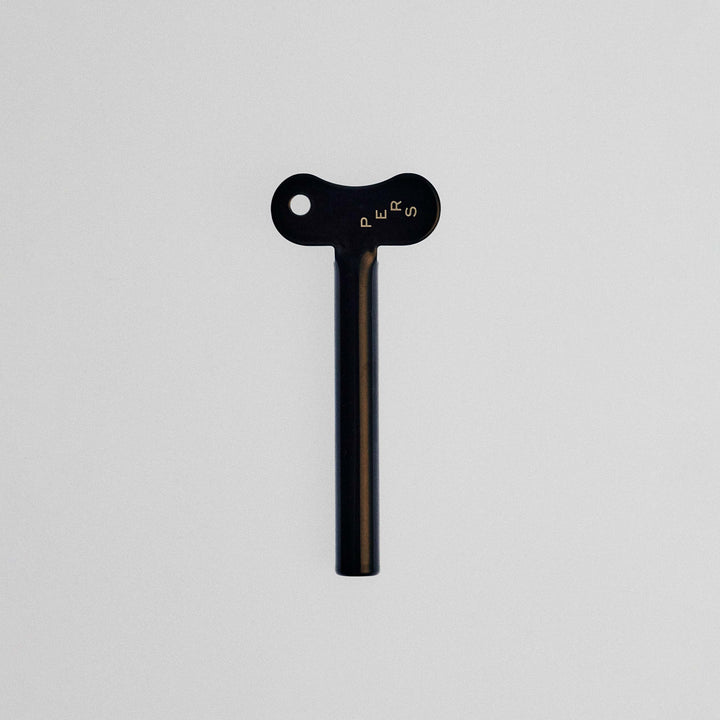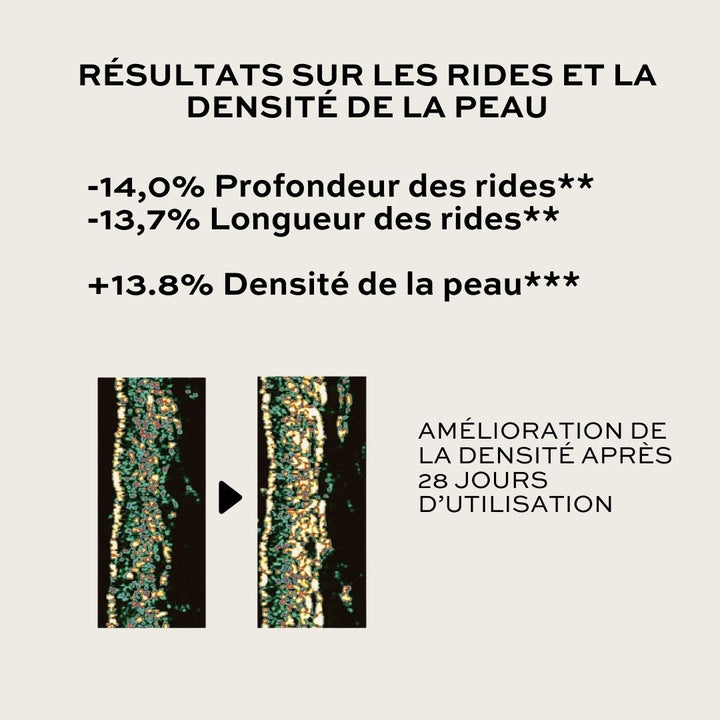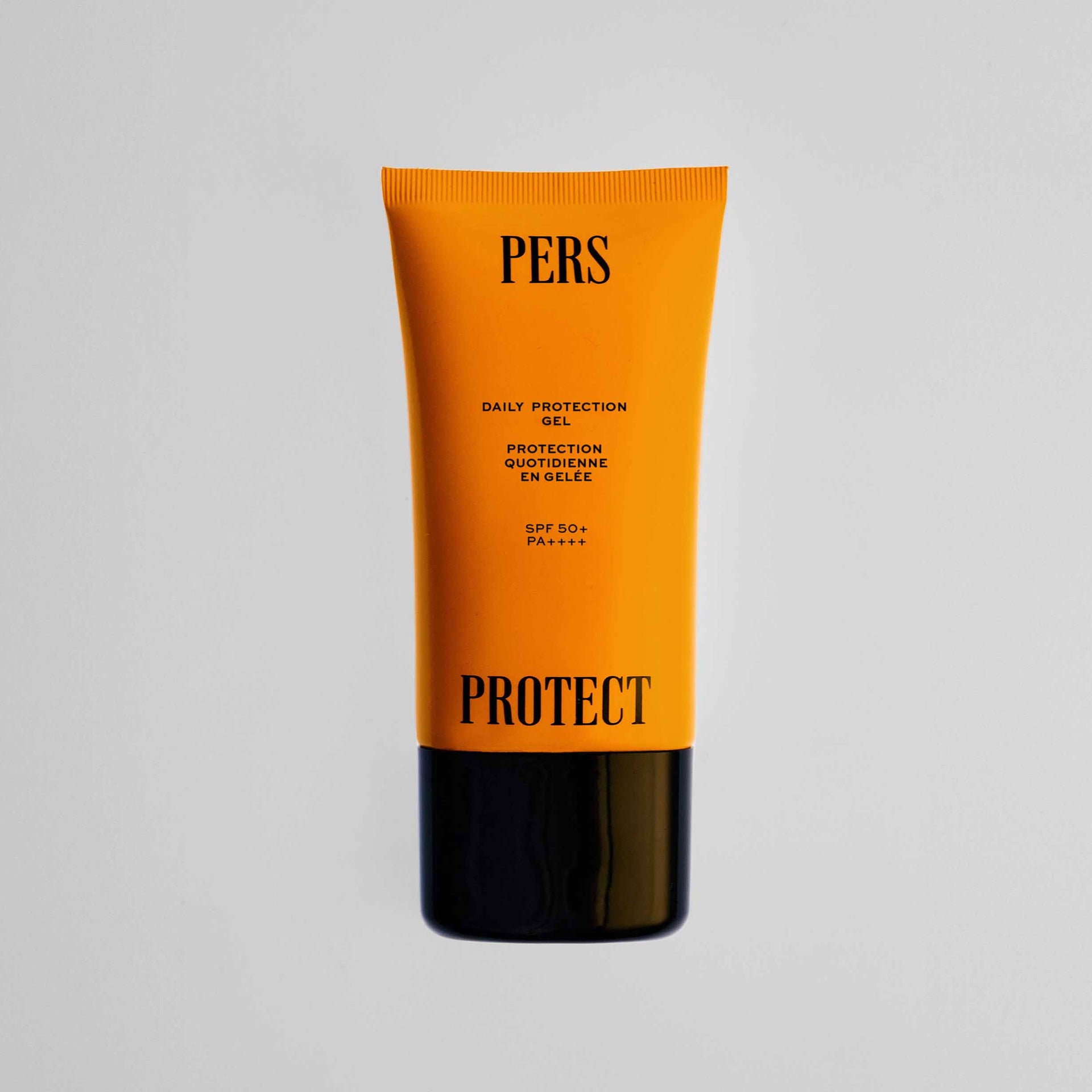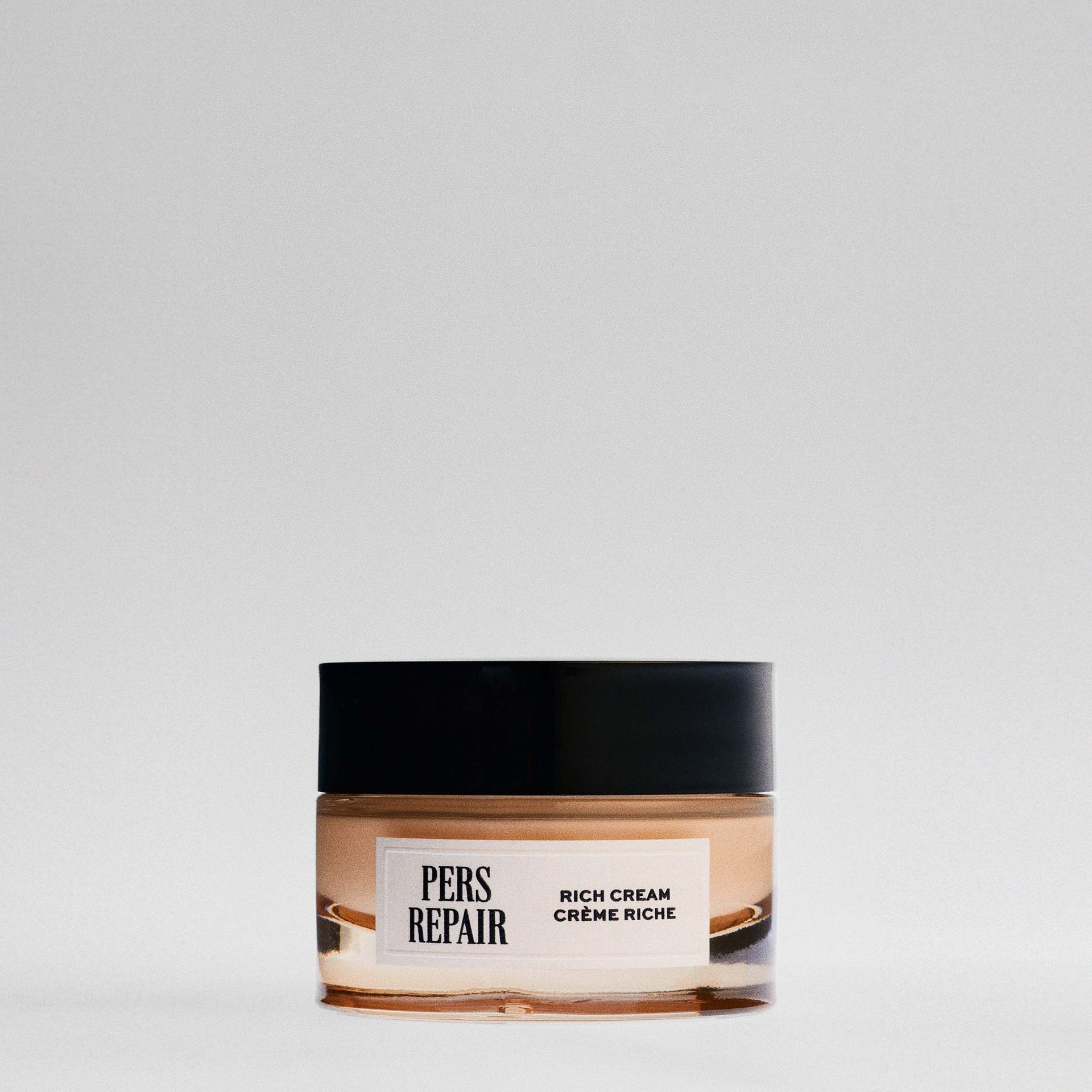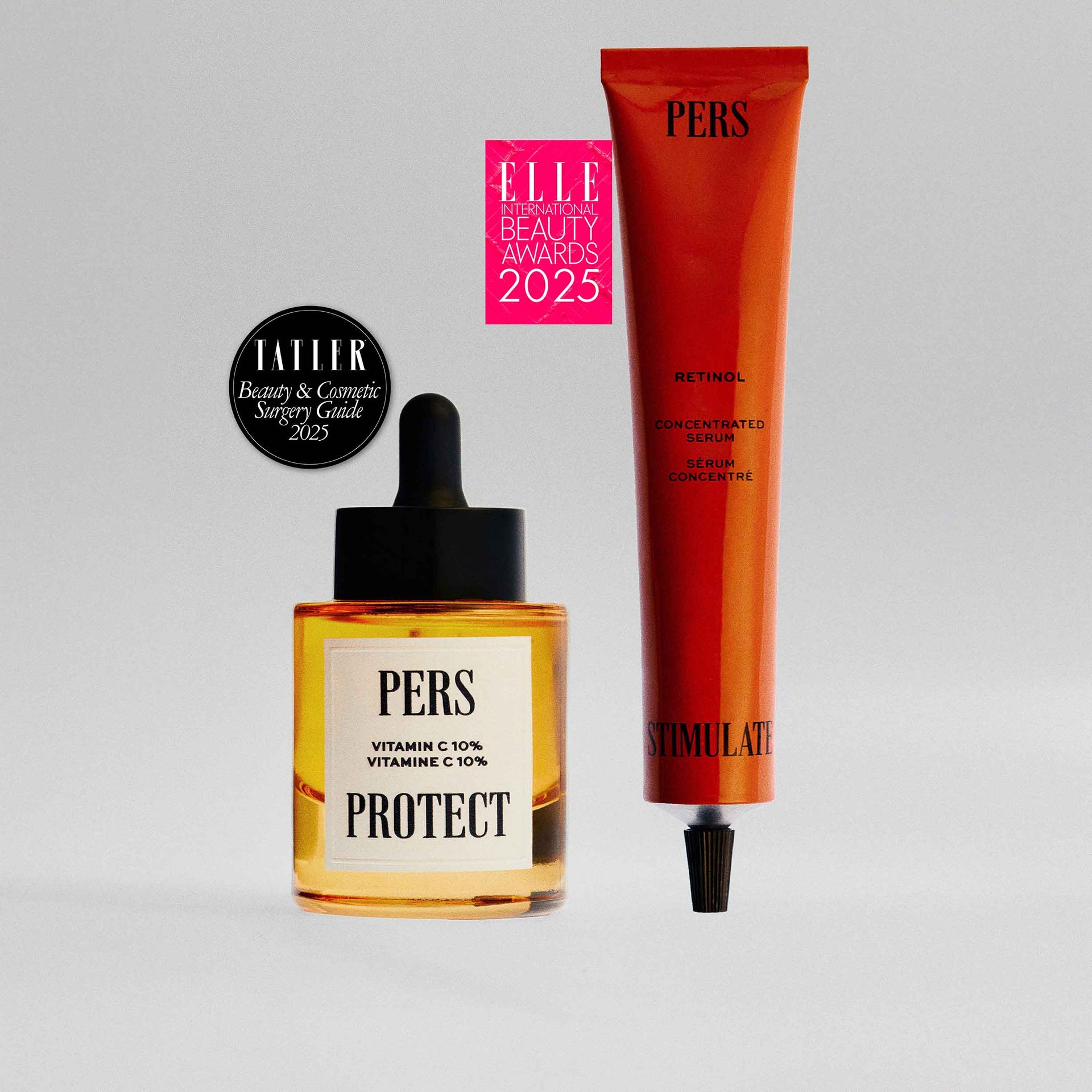Check that you're not missing anything in the PERS 4-step skincare protocol to restore your skin's natural, virtuous cycle.

0.3% Pro-Retinol Serum - 95€
Conseils d'application
Place three pea-sized doses of the Serum on the back of your hand.
1.
Apply the first dot by tapping from the chin to the oval of the face, then from the corners of the mouth to the ears, and finally from the sides of the nose to the top of the cheeks. Then gently smooth the serum over these areas.
2.
Take the second point and tap it on the nose and forehead, then gently smooth the area.
3.
Apply the third point by tapping on each side of the neck, then smooth gently.
4.
Finish the application by smoothing the oval of the face.

Results*
87.5%
indicate that lines and wrinkles are visibly reduced
95%
report firmer skin to the touch
97.5%
indicate that the complexion is unified
82.5%
indicate that deep wrinkles are reduced
* Clinically proven results over 2 months of testing, a panel of 40 volunteers, male/female parity - multi-ethnic.
Find out more
PERS Protocol
Morning
Protect
Evening
Repair or stimulate
24/7
Embellish
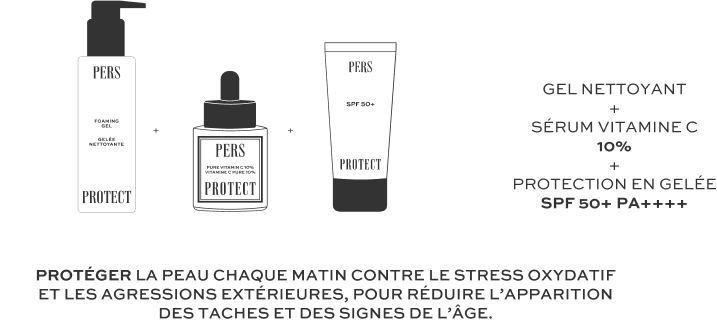
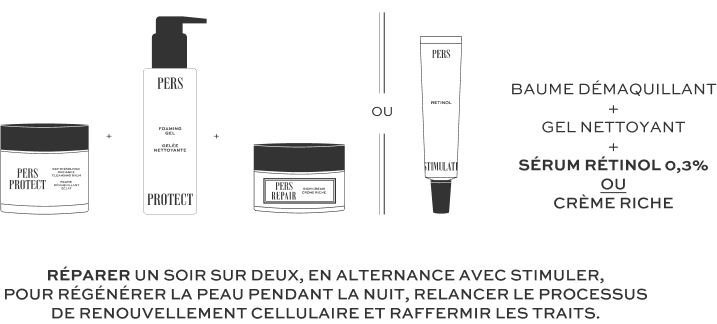

What dosage do you need?
Do the diagnosticWE'RE TALKING ABOUT IT IN THE PRESS AND ON SOCIAL NETWORKS




FAQ
Recommended by dermatologists and widely used in cosmetics, retinol is one of the most effective active ingredients for accelerating cell renewal. Retinol is recognized for its ability to boost collagen and elastin production for smoother, more elastic and firmer skin. It also removes dead cells from the skin's surface, stimulating cell renewal. Pores are unclogged and skin texture refined, preventing the appearance of blackheads and/or blackheads.
Derived from vitamin A, retinol is a member of the retinoid family.
It's perfectly possible to combine vitamin C and retinol. However, we recommend using them at two different times of the day. Retinol must be applied in the evening, as the photosensitizing molecule can cause irritation during the day. Vitamin C is best applied in the morning, to PROTECT the skin against the aggressions it will be subjected to throughout the day.
We recommend applying PERS Retinol Concentrate Serum every other evening, alternating with PERS PERS Intense Repair Rich Cream to REPAIR.
As retinol is photosensitizing, we strongly recommend applying it only in the evening, to avoid skin irritation. In addition, we recommend that you protect your skin the next day with the PERS SPF50+ Daily Protection Gel or high SPF: 50+ (well, like every other day, isn't it?).
Retinol is an active molecule with recognized irritant potential. Retinol can cause redness and discomfort in users with sensitive skin. In view of this, European regulations have limited its concentration in non-rinse-off cosmetic products to 0.3%.
Retinol can be used by sensitive skin. To offset the potential risk of intolerance to retinol, PERS has combined it with pro-retinol or natural retinol booster, suitable even for sensitive skin.
This formulation enables you to benefit from the effects of retinol while respecting the skin's tolerance threshold. Our serum has been tested on a panel of sensitive skins to ensure that it poses no risk to users with sensitive skin.
Not only is retinol suitable for acne-prone skin, but its keratolytic action is also beneficial. Retinol acts as an exfoliant, removing the dead cells from clogged pores responsible for blemishes. Retinol also tightens pores. Finally, thanks to its lightening properties, retinol reduces the marks left by imperfections.
We recommend using the retinol serum every other night, alternating with the PERS Rich Cream. However, depending on your skin's needs, you can also apply the Rich Cream after your Retinol Concentrate Serum.
As with any cosmetic product, you need to wait at least until the end of the first cell renewal cycle (28 days) to see the first results.
However, most dermatologists will tell you that visible results are more likely to appear after two months of regular use.
The 2 forms of Vitamin A, retinol or Retinyl Palmitate, can be referred to as retinol in cosmetics. Both molecules break down in the skin into retinoic acid. All retinoids must be transformed into their final version, retinoic acid, to be effective. Retinyl Palmitate is slightly less effective, but also better tolerated by the skin, as it requires one more conversion step to become retinoic acid.
Retinol esters convert first to retinol, then to retinaldehyde, and finally to retinoic acid.
Retinol esters are therefore particularly suitable for sensitive skin or for people using retinol for the first time. We have chosen this form in PERS Retinol Serum to guarantee high tolerance with no consequent impact on efficacy, provided retinol is applied over time rather than as a cure.
